32nd Station Hospital records list five commanding officers during World War II. It is not recorded if the unit had a designated commanding officer from the time it was activated until Lieutenant Colonel Burstein took command in August 1942. The known commanding officers of the 32nd Station Hospital were:
- Lieutenant Colonel (later Colonel) Theodore Burstein (assumed command August 13, 1942)
- Lieutenant Colonel Gayland L. Hagelshaw (probably assumed command May 21, 1943)
- Lieutenant Colonel (later Colonel) Harold L. Goss (assumed command June 23, 1943)
- Lieutenant Colonel William D. McElroy (assumed command July 5, 1945)
- Colonel William A. Smith (assumed command July 7, 1945)
- Lieutenant Colonel Edwin R. Ristine (assumed command September 21, 1945)
Note the rapid turnover of commanding officers in mid-1943. This caused difficulties which were even noted by local civilians in Tlemcen, as indicated in a V-mail by nurse Alice Griffin home to her family on June 30, 1943:
We have a new C.O. — wow – nuff said. The last one was swell but he only stayed about a month and was transferred. The French Chef said – “Sometimes I think Americans are crrrazy – – 6 mos – 3 cols – maybe 1 year – 10 cols – phooey.”
Updates: After this article was first published, I learned from the unit’s morning reports that Major McElroy actually commanded the unit from August 7 to August 13, 1942, prior to the arrival of Lieutenant Colonel Burstein. For ease of formatting, his biography has been left in the fourth slot as originally published. The morning reports also revealed a slightly different date for the arrival of Lieutenant Colonel Hagelshaw than the unit histories; see below for further discussion. I also learned that Colonel Smith was not the unit’s final C.O., so I added a brief entry for Lieutenant Colonel Edwin R. Ristine.
A short biography for each officer is listed below. When known, each officer is listed with full name, Army Serial Number, Date of Birth, and Date of Death. World War II U.S. Army officer serial numbers may be found in one of two formats; for simplicity, the O-______ format is used.
Theodore Burstein, O-164734 (October 25, 1893 or July 16, 1895 – September 18, 1972)
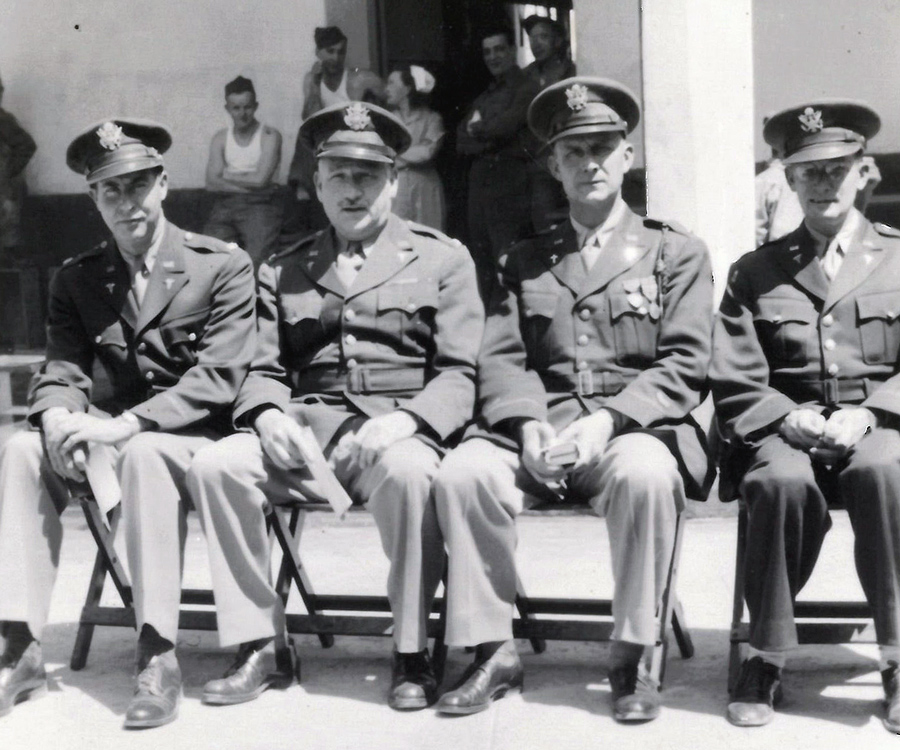
Dr. Burstein was born in Cleveland, Ohio, the son Simon and Pauline Burstein, Jewish immigrants from Russia. There seems to be some discrepancy about his date of birth (see end of article).
A questionnaire he filled out for a project that documented the World War I service of American Jews indicates he graduated from New York University Medical School in June 1915. He interned at Williamsburg Hospital in Brooklyn 1915–1916 and Mt. Sinai Hospital in Cleveland from September 1916 until entering active duty in May 1917.
Dr. Burstein was commissioned as a 1st lieutenant in the Medical Reserve Corps on April 23, 1917. He entered active service on May 29, 1917. He served as regimental medical officer for the 53rd Artillery, Coastal Artillery Corps, serving in France during the Battle of Saint-Mihiel and the Meuse-Argonne Offensive, both in 1918. He left active duty on March 13, 1919, but was commissioned as a captain in the Medical Reserve Corps on July 12, 1919.
Census records give glimpses into Dr. Burstein’s life at ten year intervals. By 1920 he had returned to work as a physician in Cleveland and with living with other doctors. In 1930 he was married to a Margaret Burstein and living in Chicago. 1940 found him living in a Scarsdale, New York with a new wife, Vera, and three stepchildren. One stepdaughter, Marilyn Luntz Blake, achieved a degree of fame as an actress.
A March 26, 1941 article in The Canton Repository (Canton, Ohio), reported that “Dr. Theodore R. Burstein of 179 21st st NW this week will close his office in the Brant bldg. and April 1 will report at Fort McClelland, Ala., where he has been called for duty in the surgical unit.” The article also stated that he was “engaged in general practice of medicine.” The article also mentioned that “He opened his Canton office six months ago, coming from New York City.” A January 11, 1942 article in the same paper mentioned that before returning to active duty, he had “volunteered his services in the case” of a “girl for whom plastic surgery build a new face after she had been seriously burned in a stove explosion.” A June 24, 1942 article in the same paper indicated that Lieutenant Colonel Burstein was stationed at Camp Livingston, Louisiana just prior to his transfer to the 32nd Station Hospital.
Lieutenant Colonel Burstein assumed command of the newly activated 32nd Station Hospital at Camp Rucker, Alabama on August 13, 1942. He commanded the unit through its remaining stateside assignments to Fort Benning and Camp Kilmer, as well as the beginning of its deployment to Tlemcen, Algeria. A January 12, 1943 morning report entry recorded Burstein’s promotion to colonel (date of rank December 26, 1942). The According to Burstein’s September 19, 1972 obituary in the Orlando Evening Star, Burstein “was personally commended by Gen. Omar Bradley” during his time in Tlemcen.
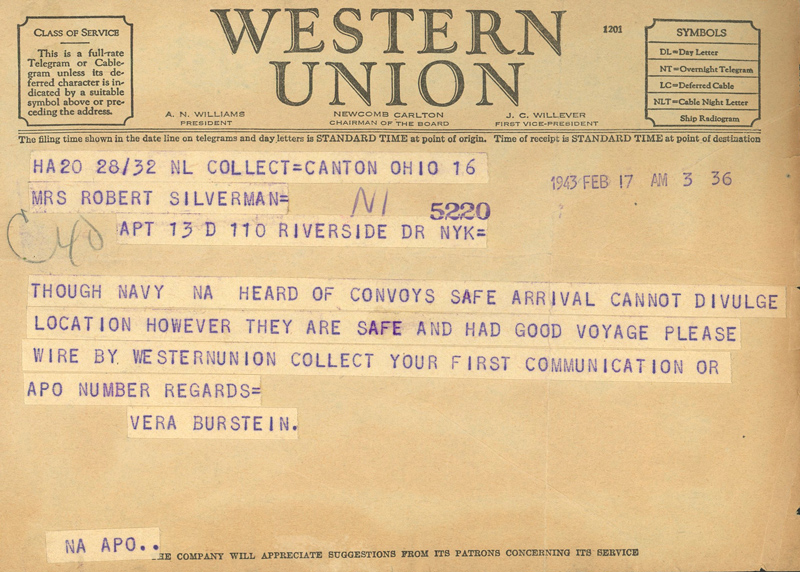
According to his military records, on May 12, 1943, in Tlemcen, Algeria, Colonel Burstein suffered a heart attack and was hospitalized in very hospital he commanded. Captain Lowell E. Vinsant’s journal stated that afterward, Major Robert O.Y. Warren led the unit until Burstein’s replacement arrived. Dwight McNelly’s unpublished manuscript mentioned of Burstein, “We did hate to see him leave.” Although the 12th General Hospital is the unit listed on his headstone at Arlington National Cemetery, Colonel Burstein’s records suggest he was only there as a patient after leaving the 32nd Station Hospital. According to a 1961 register of retired officers, Burstein left the U.S. Army effective February 21, 1944 due to disability in the line of duty. Colonel Burstein’s records (which, fortunately, survived the 1973 National Personnel Records Center fire) state that he left active duty at Ashford General Hospital, West Virginia on February 21, 1944, but remained in the reserves until the spring of 1953. Colonel Burstein’s records indicate that he spent a total of four years, ten months, and 19 days on active duty between 1917 and 1944.
According to his obituary, even after leaving the uniformed service, Dr. Burstein worked at hospitals at Orlando Air Force Base in Florida and Alameda Naval Air Station in California.
Note about date of birth discrepancy: Several records appear to give his date of birth as October 25, 1893. These include the V.A. death records, his World War I questionnaire, and a register of Ohio World War I soldiers. However census records suggest a later date of birth, since he is listed as 4 in the 1900 census and 14 in the 1910 census. His Social Security Administration records and tombstone at Arlington National Cemetery lists his date of birth as July 16, 1895 and date of death as September 18, 1972. Based on details in his 1972 obituary, they’re definitely the same individual. His obituary lists his age as 77, which is consistent with the 1895 date of birth.
Gayland Lyle Hagelshaw, O-277296 (June 22, 1905 – November 4, 1981)

Hagelshaw was born in Palo Alto, California and raised in Union City, Michigan. According to a biography written by Frank, Connie, and Gayland L. Hagelshaw, Jr.:
He attended Olivet College in Olivet, Michigan, received his medical degree from The University of Michigan in 1929, and interned at Hurley Hospital in Flint, Michigan. He then completed a radiology specialty at Mt. Sinai Hospital in New York City. He joined the U.S. Army Reserve in 1930.
After returning to practice in Michigan, he married his wife Bernice in 1934. The couple raised two sons.
On February 3, 1941, Major Hagelshaw entered active duty in the U.S. Army. While serving with the 21st General Hospital, he was promoted to lieutenant colonel. His unit shipped out to England in October 1942, but their stay was brief due to the beginning of Operation Torch. On November 27, 1942, the 21st General Hospital was deployed to North Africa, arriving on December 6. The unit began operations in Bou Hanifia, Algeria, where Hagelshaw served as Chief of X-Ray Service. He received a Certificate of Merit for his performance there.
Lieutenant Colonel Hagelshaw assumed command of the 32nd Station Hospital in Tlemcen, Algeria. (A unit morning report stated that he arrived and assumed command on May 21, 1943, while the unit’s 1943 report, “Medical History of the Thirty Second Station Hospital” gave the date as May 23, 1943. The morning report would have been filled out on or shortly after the 21st, whereas the history report concerned events prior to Lieutenant Colonel Goss’s arrival, so the morning report entry is probably correct.) He served for one month before being relieved by Lieutenant Colonel Harold L. Goss. In his letter to Willard Havemeier written in 1998, Dr. Louis Linn recalled Lieutenant Colonel Hagelshaw favorably:
I remember Colonel Burstein, our first commanding officer, who had to go home shortly after our arrival because he suffered from an acute coronary occlusion (heart attack to you). Subsequently we had an unusually fine new commanding officer whose name escapes me. When he arrived he said, “I can see that this is a well-run hospital and you fellows obviously are doing good things. Accordingly, I will just be an observer for a couple of weeks before I institute any changes in accordance with my own ideas.” Unfortunately, this wise and civilized man received orders assigning him elsewhere very soon.

After leaving the 32nd Station Hospital, Lieutenant Colonel Hagelshaw commanded the 151st Station Hospital in Algeria, Sicily, and Italy. Photographs in his collection indicate he paid the 32nd Station Hospital a visit at least once at its new location in Caserta, Italy sometime in early 1944. Hagelshaw was recalled to the United states in June 1944, where he served at Valley Forge General Hospital. Around this time, he was promoted to colonel. After the war ended in 1945, he returned to Michigan where he lived until his death in 1981.
Harold Leroy Goss, O-201505 (July 2, 1890 – March 15, 1976)
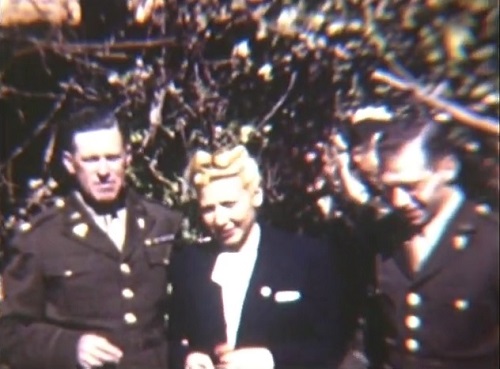
Dr. Goss was born in Neillsville, Wisconsin, the eldest son of Robert and Emily Goss, who had immigrated from Canada. Around 1896 the family moved to Minneapolis; Robert, a millwright, worked in one of the city’s flour mills.
It appears Goss sometimes went by his middle name, Leroy; a Leroy Goss who resembles later pictures of Dr. Goss is listed as a member of the Phi Rho Sigma Medical Society in a 1915 University of Minnasota yearbook, so it can be presumed he was in medical school there at the time.
A profile by Robert A. Barr entitled “Dr. Goss, 1st Reserve General, May Retire”, printed in The Seattle Daily Times on August 24, 1950, stated: “He first enlisted in Company B., 1st Infantry, of the Minnesota National Guard.” The article added an anecdote for his time as an enlisted man: “The doctor recalled the time a colonel in his cups [sic] lost his hat and promptly bellowed for Quartermaster Sergeant Goss, insisting the sergeant should be able to find a substitute headpiece, if not the original.” The article also stated: “He barely mentioned his service on the Mexican border when a bad man named Pancho Villa was cutting capers in 1916.”
A March 29, 1949 article in The Seattle Daily Times entitled “Dr. Goss Promoted to Rank of General” stated that: “He was commissioned in 1914 as an artillery officer and in 1917 transferred to the Medical Corps.” In 1917, when Dr. Goss filled out his draft card for World War I, he was living in Minneapolis and working as a physician for Northwestern Hospital. He wrote that he already had nine years of military experience, listing himself as a 1st lieutenant in the 1st Minnesota Field Artillery. Although he wrote that he was single on the card, he must have married his wife Helen sometime later in 1917, given that they’d been married for about 13 years according to the 1930 census.
I don’t have much information about Dr. Goss’s World War I service. His name appeared on a passenger list for the (R.M.S.) Baltic sailing from New York on September 1, 1918, as a 1st lieutenant in the Medical Corps assigned to Evacuation Hospital 21, with Mrs. Helen L. Goss listed as his emergency contact. In June 1919, Captain Harold L. Goss appeared on a passenger list indicating he returned home from Brest, France aboard the U.S.S. Oklahoma, the battleship best known for being sunk 22 years later during the Japanese attack on Pearl Harbor. Barr wrote that Dr. Goss’s service in France introduced him to corned beef, still one of his favorite foods over three decades later.
By 1920, Harold and Helen were living in Winthrop, Minnesota. In 1925, the couple moved to Washington state, where they soon welcomed a daughter. By 1930, Dr. Goss was practicing medicine in Seattle.
In 1942 he was Staff President at Providence Hospital in Seattle, Washington. His 1942 draft registration card listed him as standing 5 feet 8½ inches (174 cm) tall and weighing 165 lbs (75 kg) with brown hair and blue eyes. According to Department of Veterans Affairs records, Dr. Goss resumed active duty in the U.S. Army (for a second time) on August 19, 1942.
The 1950 profile by Robert A. Barr in The Seattle Daily Times didn’t say much about Dr. Goss’s World War II service, but did contain a telling anecdote, apparently preceding his command of the 32nd Station Hospital:
Dr. [Goss] remember with a chuckle a landing in Africa when he trotted at the head of his outfit, with G. I.’s cursing him most of the way more than a mile to shore on a rocky jetty because the sky was full of German fighters. He said that as an old mile-runner from Minnesota the jog didn’t bother him much. “I kept forgetting to let them rest,” he said.
Lieutenant Colonel Goss assumed command of the 32nd Station Hospital in Tlemcen, Algeria on June 23, 1943. He was destined to command the unit in Tlemcen and Caserta past V-E Day.

Lieutenant Colonel Goss quickly made an impression on the members of his unit, though it wasn’t necessarily a favorable one. There are a few accounts of his leadership style. The most specific one was provided in a 1998 letter from Dr. Louis Linn to Willard Havemeier, who compared Goss unfavorably to his predecessor, Lieutenant Colonel Gayland L. Hagelshaw:
Then came Colonel Goss. He was in every way the antithesis of the aforementioned colonel. He felt that everything we were doing was wrong and he instituted drastic changes in every detail of the hospital operation, almost on the day of his arrival. I do not know how matters worked out subsequently because, shortly after the arrival of Colonel Goss, I received orders transferring me from the 32nd Hospital to the 51st Station Hospital which was designated to function exclusively as a psychiatric hospital.
Dwight McNelly’s manuscripts also drip with hostility towards Goss. Interestingly, McNelly provides little explanation for what he disliked about Goss, aside from his perception that the new C.O. was ambitious:
[Burstein’s] replacement was a G.I. type officer, bucking for full colonel. His name was Goss– we [nicknamed] him, after a while, old Blood and Goss. He told me once that there was no difference between pink and red salmon. (He said his family had a fish business in the state of Washington). His first words were to keep our noses clean and we would all return some day to the states and home.
McNelly wrote that while the unit was in transit from Algeria to Italy in December 1943:
During our one drill on deck of the Cameronia, we found little room between us and our Col. Goss. His back was against the railing. He lectured us and told us to keep up the good work and we would have as good a record in the Italian Campaign [as] we had in N. Africa. Also, the usual safety drills followed and after it was all over, we laughed at how easily we could have just made three steps forward and old Blood and Goss would have been no more. Ha.

Perhaps the funniest story about Colonel Goss in the McNelly manuscript also suggests perhaps that McNelly’s harsh assessment was at least a little unfair. McNelly wrote:
Once, when the Col was hospitalized and put in a small room by himself, due to an impacted tooth, all went around with a smile on their face. In order to help relieve the pain on his jaw, he came and I put the heat lamp on his face. He was behind the screen and unseen. Coming into the ward around this time was a corporal that would go to chow to me and I didn’t have a chance to tell him to go ahead since I had the Col as a last minute patient. Out spurts this corporal’s big news–“The Col’s out of his bed and prowling around”. It was loud enough for the commanding officer to hear, but he never let on to me that he had heard it. In fact, he was a very good patient, although I guess he was having some pain due to the tooth.
Captain Lowell E. Vinsant recorded a more favorable impression of Lieutenant Colonel Goss in an entry in his journal on November 7, 1943:
The present C.O. is the 3rd, which does not suit the old [clique]. He is a very nice fellow. Treats everybody the same. Strictly A.R. [Army Regulation] and has built the hospital from a 500 to 1000 bed hospital and done a good job.
Goss was promoted to full Colonel on July 17, 1944. Rose E. Orban chose Colonel Goss to give her away during her wedding to Michael Firtos at the hospital chapel on August 30, 1944. (Ironically, he was unable to perform this role for his own daughter, who married back in Seattle early in August 1945, while Colonel Goss was still in Italy.)
Captain Vinsant’s opinion of Colonel Goss had soured by August 22, 1945, when he wrote in frustration that “The Goose” “talks incessantly, lies like hell, talks about himself alone, has done everything everybody else has done and better.” Even then, however, Vinsant conceded that “He runs a good hospital”.
Colonel Goss continued as the 32nd Station Hospital’s commanding officer through V-E Day before he was eventually transferred to take command of the 26th General Hospital on July 4, 1945. He was back in Seattle by early September 1945.
After the war, Dr. Goss returned to Washington state. I found a document that lists him as staff president at Providence Hospital in Seattle for 1947–1948. Polk’s Seattle City Directory from 1948 until 1960 listed him as practicing there as an ophthalmologist.
The March 29, 1949 article in The Seattle Daily Times entitled “Dr. Goss Promoted to Rank of General” stated that the day before, Dr. Goss “was promoted to the rank of brigadier general in the Army Reserve.” The article continued:
It was the first appointment of a Reserve officer to general in the state since the First World War. Dr. Goss commands the 310th Hospital Center, Organized Reserve Corps, which is stationed here.
Barr’s 1950 profile in The Seattle Daily Times mentioned that his military career was drawing to a close:
Dr. Goss, long a Seattle eye specialist, said with a wry smile and a shrug that “you just don’t stay around after you reach 60— and I got there in July. I haven’t received official notice but I know it’s coming and will be here soon.”
Indeed, a list of retired U.S. Army officers dated January 1, 1951 indicates that Goss retired from the army on November 30, 1950 with a rank of brigadier general. A 1966 register gives his retirement date as July 31, 1950, with a retirement code indicating age 60 with 20 or more years of service.
William Davis McElroy, O-481929 (April 22, 1901 – April 5, 1991)
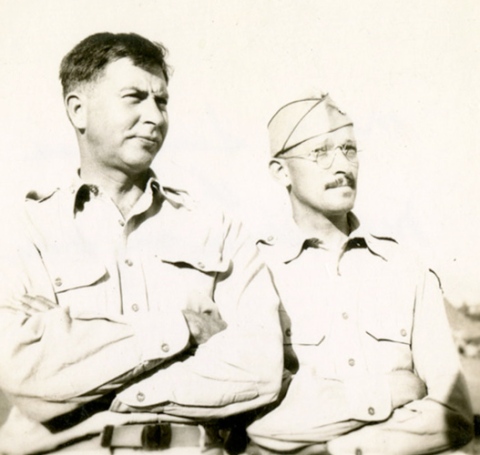
(This officer’s biography also listed in the Doctors of the 32nd Station Hospital, Part I: Surgical Service article.)
Major McElroy was assigned to the 32nd Station Hospital on August 7, 1942. He commanded the unit until the arrival of Lieutenant Colonel Burstein on August 13, 1942. Dwight McNelly’s unpublished manuscript mentions that Major McElroy asked him to help out in sick bay of the Ancon during the 32nd Station Hospital’s crossing to North Africa. Major McElroy was listed as Chief of Service – Orthopedic Surgery on the December 31, 1943 roster. He was promoted to lieutenant colonel on May 7, 1944 but kept the same position (at least through the end of 1944).
Lieutenant Colonel McElroy actually assumed command of the 32nd Station Hospital on July 5, 1945 after Colonel Harold L. Goss was transferred to the 26th General Hospital on July 4. However, Colonel William A. Smith took command on July 7, 1945. Lieutenant Colonel McElroy left the unit that same month.
I initially struggled to find a record of McElroy in census or other records. However, in March 2019 the daughter of Dr. Lowell E. Vinsant sent me a copy of her father’s World War II journal, which revealed that Dr. McElroy was from Youngstown, Ohio. Using that, I was able to find that he was born in Ohio, the son of Charles McElroy. By 1930 he was a doctor listed as working at the city hospital in Youngstown. He also appeared in the 1940 census as a 39-year old doctor living there. His first wife, Grace Walker McElroy (1902–1934) died of complications following giving birth to their son, Dr. Paul D. McElroy (1934–2002). By 1940, he had married his second wife, Elinore McElroy (1911–1984).
William Alexander Smith, O-8674 (June 30, 1888 – September 11, 1970)
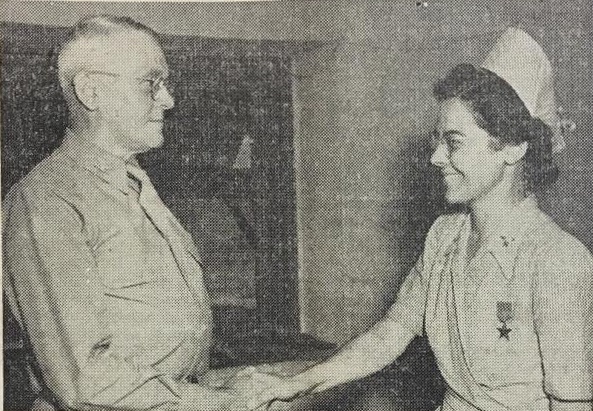
Colonel Smith was assigned to the 32nd Station Hospital on July 4, 1945, transferring from the 70th General Hospital. He assumed command of the 32nd Station Hospital after arriving at the unit in Caserta, Italy on July 7, 1945. According to a report he wrote for the 32nd Station Hospital, Colonel Smith previously commanded the 7th Station Hospital and was awarded the Bronze Star Medal for his service there. According to the unit’s morning reports, Colonel Maxwell Jones, C.O. of the Southern District, Peninsular Base Section, presented him the medal on September 14, 1945 while the unit was in staging. In his journal, Captain Lowell E. Vinsant described Colonel Smith as “a very fine commanding officer” but did not elaborate further.
Colonel Smith commanded the 32nd Station Hospital during the end of its operations in Caserta and its time in staging in Naples. He was transferred to the 300th General Hospital on September 21, 1945. A May 9, 1981 document listing members of the 32nd Station Hospital (in preparation for an upcoming reunion) listed Dr. William Smith as deceased.
When this article was first published, I wrote that I had made a cursory search but concluded that, “Given that there are over 6,000 William Smiths in the U.S. Department of Veterans Affairs B.I.R.L.S. files, I have little hope of ever identifying the correct man in other records.” As it turns out, I needn’t have been so pessimistic. In October 2019, I found an article from October 31, 1945 printed in the Greensboro Daily News (Greensboro, North Carolina), which reported that “Col. William A. Smith, formerly of Goldsboro, commanding officer of the 32nd station hospital” was awarded the Bronze Star. The article continued:
Colonel Smith was commissioned in the medical corps of the army in August, 1917, and served with the occupational forces in Germany following world war I. He is the son of Mrs. Smith and the late Dr. R. A. Smith of Goldsboro.
With that information, I was able to find Dr. Roger Alexander Smith in Goldsboro on the 1900 census. I followed that to a family tree for Dr. William Alexander Smith (1988–1970). He and his wife Carmen Kellner Smith raised a daughter and a son. When his daughter was born in the Station Hospital, American Forces in Germany, Coblenz, German in 1921, Dr. Smith was a captain in the U.S. Army Medical Corps. Dr. Smith traced his lineage to Captain Thomas Hadley, who fought in the American Revolution. He died in Raleigh, North Carolina, aged 82.
Edwin Russell Ristine, O-480267 (March 29, 1906 – July 12, 1988)
Ristine was born in Camden, New Jersey. He joined the U.S. Army on July 9, 1942. According to his obituary, printed in The Philadelphia Inquirer on July 14, 1988, he “received his bachelor of arts from the University of Pennsylvania in 1926 and graduated from the university’s medical school in 1929.” He worked at Cooper Hospital before and after the war. His obituary stated that “he was director of surgical services at the 61st station hospital (a Cooper Hospital affiliate) in Africa and Italy, and received three battle stars, a presidential citation, and a bronze star medal.” Lieutenant Colonel Ristine joined the 32nd Station Hospital from the 61st Station Hospital on August 30, 1945. The unit was staging in Naples at the time. His M.O.S. was recorded as 3150 (general surgeon), though the following day it changed to 3136 when he was designated chief of the Surgical Service. He assumed command of the unit on September 21, 1945. He was the unit’s last C.O. during its final days in Naples and return to the United States. He was married to Dr. Florence C. Slater Ristine and had a son and a daughter. He died in Mantuna, New Jersey.
Last updated June 1, 2022

Great blog topic and well written posts! My wife and I, too, have scrapbooks and pictures of a WW2 station hospital in England, and from a hospital ship in the South Pacific. Both nurses passed within the last ten years and their families didn’t want any of the pictures or scrapbooks. We were so glad to see someone who IS proud to keep and publish a family member’s record from the last real national crisis. Have a good 2019!
LikeLike
Thanks! You should consider digitizing the items, and possibly even donating them to a military museum since the family doesn’t want them any longer. The U.S. Army Medical Museum at Fort Sam Houston may be interested, for instance. You may be able to find contact information for them online, but if you’re having difficulty send me a message via the contact page and I can pass your information along.
LikeLiked by 1 person
Thank you for the great suggestion! I’ll discuss it with my wife. I like the idea.
LikeLike